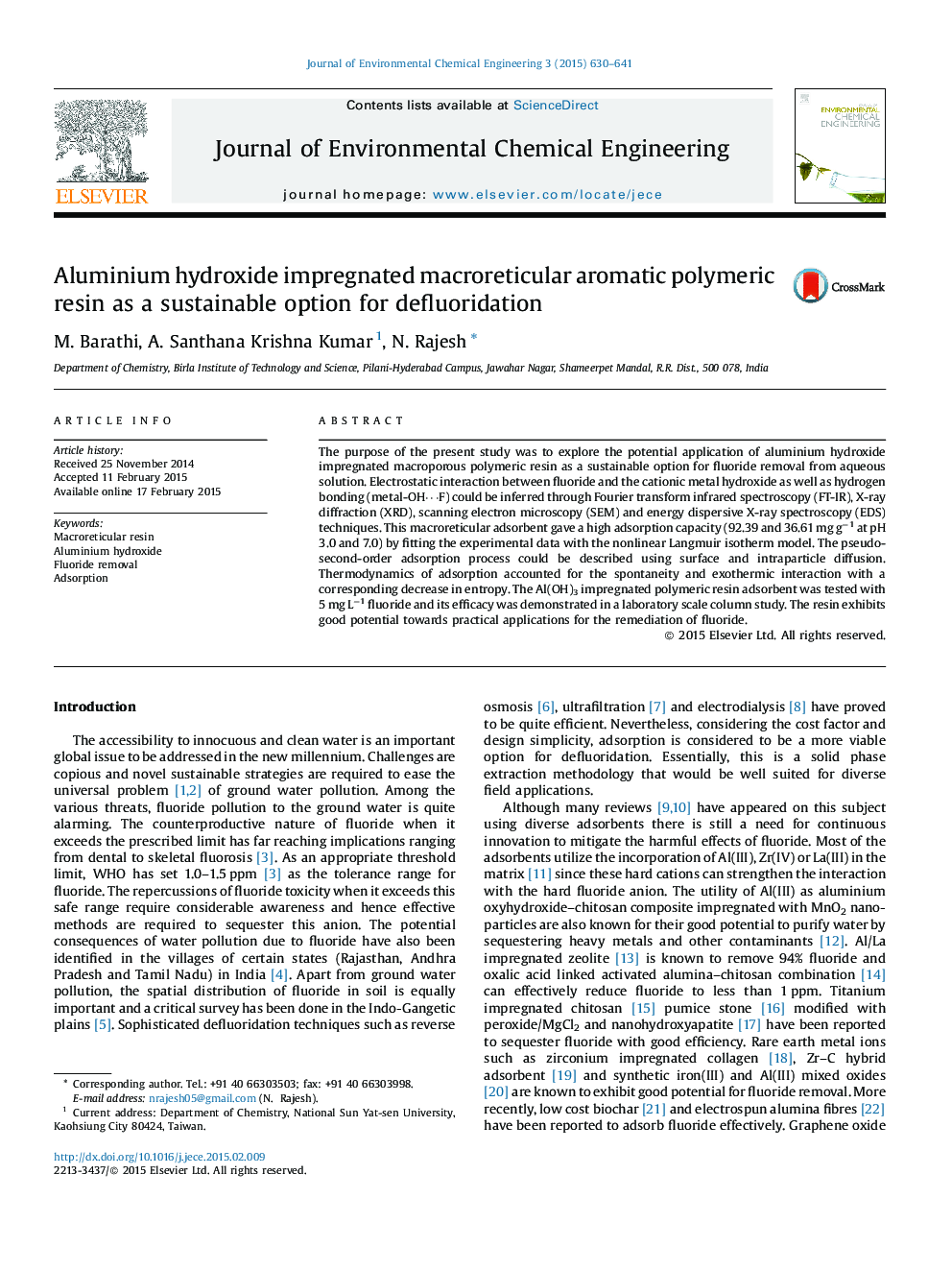| Article ID | Journal | Published Year | Pages | File Type |
|---|---|---|---|---|
| 222286 | Journal of Environmental Chemical Engineering | 2015 | 12 Pages |
•Aluminium hydroxide impregnated macroporous polymeric adsorbent was prepared.•Characterization of the adsorbent was studied in detail.•The sorbent has a maximum F− ion adsorption capacity of 36.61 mg g−1 at pH 7.0.•F− ion adsorption favoured by electrostatic interaction and hydrogen bonding.•Adsorbent is effectively regenerated with sodium hydroxide.
The purpose of the present study was to explore the potential application of aluminium hydroxide impregnated macroporous polymeric resin as a sustainable option for fluoride removal from aqueous solution. Electrostatic interaction between fluoride and the cationic metal hydroxide as well as hydrogen bonding (metal-OH⋯F) could be inferred through Fourier transform infrared spectroscopy (FT-IR), X-ray diffraction (XRD), scanning electron microscopy (SEM) and energy dispersive X-ray spectroscopy (EDS) techniques. This macroreticular adsorbent gave a high adsorption capacity (92.39 and 36.61 mg g−1 at pH 3.0 and 7.0) by fitting the experimental data with the nonlinear Langmuir isotherm model. The pseudo-second-order adsorption process could be described using surface and intraparticle diffusion. Thermodynamics of adsorption accounted for the spontaneity and exothermic interaction with a corresponding decrease in entropy. The Al(OH)3 impregnated polymeric resin adsorbent was tested with 5 mg L−1 fluoride and its efficacy was demonstrated in a laboratory scale column study. The resin exhibits good potential towards practical applications for the remediation of fluoride.
Graphical abstractFigure optionsDownload full-size imageDownload as PowerPoint slide
